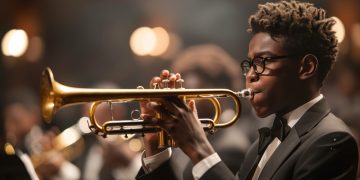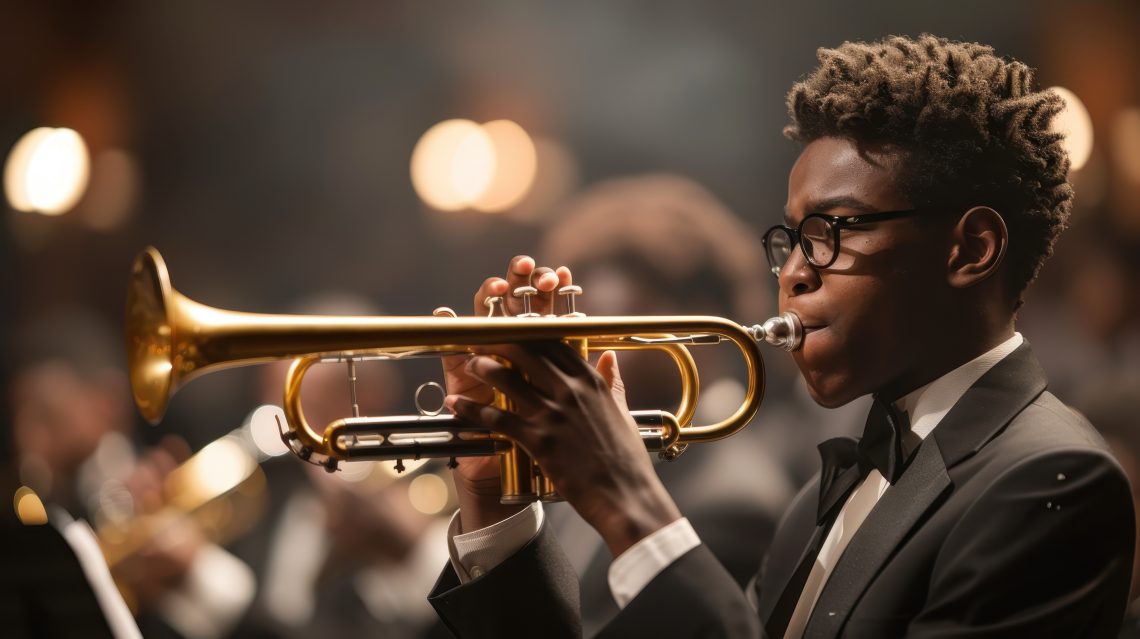Jazz is a tricky business to be sure, but it is also entirely learnable and accessible to ANY student independent of age, past experience, or innate ability level. After 30+ plus years of teaching experience ranging from public school and university students to all-state bands and professional horn sections, I can confidently say that one crucial element in teaching music is often overlooked, despite its great value – articulation.
Articulation (the art of how and when one begins and ends a note) is the exact same thing that makes a Brooklyn accent sound different than an Australian accent. Each accent has a distinct feel, lilt, and group of connotations and associations with it. Articulation in music serves the same purpose. It can be a central element of what makes one band swing while another doesn’t, why one jazz solo sounds convincing, while another just doesn’t cut it. Swing, feel and style all come from accurate articulation.
The frustrating part for many teachers is that each instrument has its own individual technique for articulation. Horns use tongue and air, while drummers and pianists use finger and hand control; guitarists are concerned with picking and muting, while jazz vocalists are dealing with the scat syllables and vocables they choose. While we may not be masters of all these instruments and techniques, the general approach and logic is the same from one instrument to the other.
One of the best tools for working on articulation is using jazz solo transcriptions and “composed solos” like the ones included in many jazz etude books on the market. In these, the student plays well-constructed jazz solos, with proper articulations (sometimes) included on the written music. Most importantly, they should also listen to and mimic a professional musician playing the part. Some of us learn most naturally from a more intellectual/reading/visual stance, while others learn best by absorbing/listening. Both approaches are important.
The Rules of Jazz Articulation
1) Jazz is LEGATO music. After years of adjudicating bands and leading thousands of master classes, I am comfortable in saying 90% of players articulate TOO MUCH, and thus break up the groove and swing of the line. No articulation at all is far better than too much of it. Play legato.
2) Play The Shape of the Line. If you play “connect the dots” with the note heads on a piece of music, you will create a graph with distinct peaks and valleys. When the line goes up, you should play louder. When it goes down, you play softer. When it creates a peak that is where you hit the note hardest and loudest. It is a very easy concept to understand but takes a good deal of practice time to internalize and realize on an instrument. Playing the shape of the line creates and emphasizes the syncopations inherent in a great jazz line.
3) End Phrases With “Be-Bop”. Many jazz phrases end with two eighth notes before a rest. When this happens, play them as if you are saying the word “be-bop.” This onomatopoeic phrase perfectly illustrates how those two notes should sound – a) long-short b) more accented-less accented, c) both tongued (picked, etc), and d) legato between the two notes. This articulation creates a snappy, syncopated, rhythmically percussive sound. I learned this directly from Dizzy Gillespie, and he knew something about be-bop!
4) Off Beat Quarter Notes Are Generally “Detached.” Think the syllable “duht.” Jazz often looks different on the page than it sounds to the ear. An eighth note followed by a quarter note would actually be played long – short most often. The eighth note would literally be longer than the quarter note (which explains why great classical musicians have a hard time sounding legitimate playing jazz – they are being too literal with the notes on the page). Remember to leave actual silence after an offbeat quarter note. This gives the syncopation more impact and gives the line bounce and lightness.
5) Jazz is LEGATO music. Yes, we’ll say it again. It is so easy to introduce random short notes into our playing which work against us trying to get a good swing feel. Playing 100% legato, connecting all the 8th notes is quite hard. Try it, practice it, and enjoy the flow!
In the hierarchy of musical/jazz importance, I actually place good rhythms and articulations ABOVE correct notes. Always. The history of jazz (as well as blues, country, R&B, rock and soul) is full of wrong or questionable notes, played or sung with fabulous style, groove and intention. Consider rethinking or retooling your personal hierarchy of musical elements to move articulation up a notch or two – you’ll be glad you did!
Jeff Antoniuk is the founder of JazzWire (jazzwire.net) and a member of the Jazz Education Network Education Committee (jazzednet.org). You can find Jeff on YouTube at his channel “Jeff Antoniuk Educator.” There are hundreds of free educational videos there, including the Digging Deeper Jazz series, and Digging Deeper #55 which accompanies this article.























